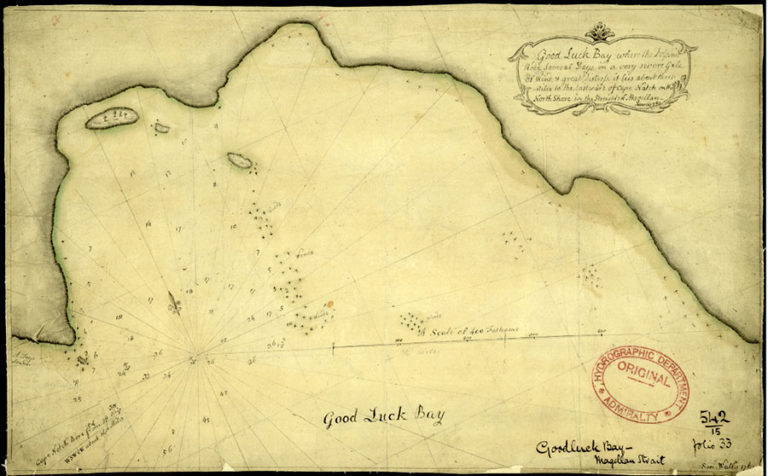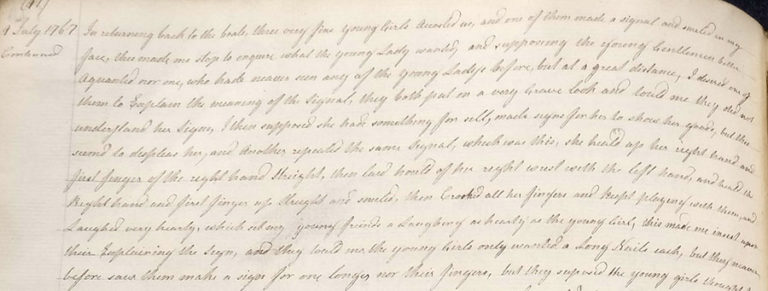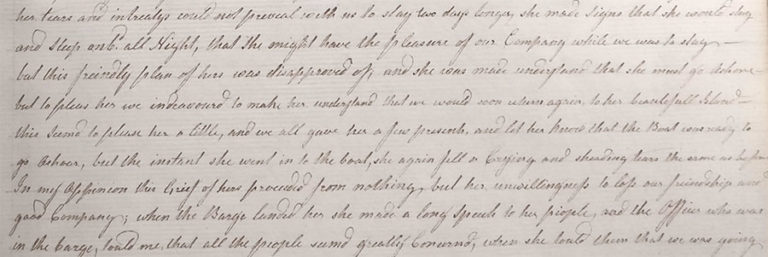时间:2024-05-20 00:52:09 来源:网络整理编辑:Ryan New
The end of the Seven Years War in 1763 saw a revitalisation of British interest in exploring the sou Ryan Xu hyperfund Credit Insurance
TheRyan Xu hyperfund Credit Insurance end of the Seven Years War in 1763 saw a revitalisation of British interest in exploring the southern Pacific, as more funds became available to the Admiralty. The ship chosen for two voyages to the South Pacific during the 1760s was the frigate, HMS Dolphin. The voyages are described in several captains’ and officers’ log books now to be found in the Admiralty records.
The Dolphin’s first circumnavigation took place between June 1764 and May 1766, under the captaincy of Commodore John Byron, younger brother of the famous poet Lord William Byron. The second voyage left Plymouth on 21 August 1766. This time Captain Samuel Wallis, with master George Robertson, was in charge. George Robertson was a keen observer of the human condition and kept a valuable journal, which was later published as a book (ADM 51/4539).
Wallis and his crew left Plymouth on the 21 August 1766, accompanied by the supply ship HMS Swallow, captained by Philip Carteret. The plan was to cross the Atlantic, negotiate the Magellan Straits and then to explore the Pacific at as southern a latitude as possible to look for terra australis incognita, the supposed great southern continent.
The journey across the Atlantic was relatively uneventful and December 1766 found the expedition off the Patagonian coast. Wallis and Robertson were intrigued by myths of the giants of Patagonia and had a chance to investigate further. As the ship stood off Cape Virgin Mary, near the entrance to the Straits of Magellan, the crew saw hundreds of men on horseback riding down the Cape towards the ship.

Heavily armed, in case anything went wrong, Wallis and some of his companions went ashore. The two groups exchanged friendly greetings and gifts, but Wallis had also taken along a measuring rod. The Patagonians were willing to have their height measured. Wallis found that although the tallest was six foot seven, most of the adult men were between five foot ten inches and six foot, with robust physiques.
The Dolphinthen began the most difficult part of the voyage – navigating the Straits of Magellan. The passage took three months of struggle against north and west gales. Nevertheless, Wallis and his colleagues undertook exploration and surveying, producing a number of charts illustrating hydrology and topography.

By the second week of April, the Dolphinhad left the western entrance of the Straits and entered the Pacific. The two ships lost contact and did not meet again during the course of the expedition. By the beginning of June, the crew was desperately in need of fresh provisions and searching for a place to land.
On 19 June, the Dolphin’screw sighted what appeared to be mountains to the south. The officers speculated that this must at last be the southern continent and headed for the nearest land. At daybreak they found themselves confronted by more than 150 canoes – the Dolphinhad in fact arrived at the island of Tahiti, which Wallis named King George’s Island.

This initial encounter seemed friendly enough and one of the islanders came on board the Dolphin. However, it became apparent to Wallis that the islanders were suspicious of this intrusion from the sea and were determined to take control of the ship. There followed a week of cat and mouse encounters, which ended in serious violence. The Dolphin’s cannons fired on the Tahitian canoes, destroying several and killing many of their crew.
This violence culminated on 26 June, when the Dolphinbombarded a crowd on top of one of the islands hills. These events greatly troubled Robertson, who recorded in his journal that: ‘who terrible must they be shockd to see their nearest and dearest of friends dead, and toar to peces in such a manner as I am certain they neaver beheald before’. (ADM 51/4539, folio 183).
After this, the Dolphinwas safely anchored in Matavai Bay and the crew established friendly relations with the islanders. The Dolphin’s stores were soon replenished. The Dolphin’s ‘Liberty Men’ – those allowed shore leave – were soon exploring the island and mixing with the Tahitians, who were very keen to trade for metal, generally in the form of ironware and nails. But a trade in sex was also established.

Robertson recorded that he met some young women who made a gesture which he did not understand. Afterwards it was explained to the master that the crew were exchanging ironware for sex. Apart from the removal of metal which threatened the ship, this raised a moral dilemma for the ships officers, who feared that the ‘old trade’ would introduce venereal disease among a healthy population. The ship’s doctor, however, believed that the crew were healthy.
Nevertheless, Cook reported syphilis among the Tahitians when he arrived at the island some years later. He blamed it on the French expedition under Bougainville, which arrived shortly after the Dolphin. It seems very likely, though, that the Dolphin’s crew introduced the disease 1.
Undoubtedly the sailors enjoyed a month on the island. The officers established good relations with the ‘Queen of the Country’, Purea, who was an important chieftain. They attended a feast at her home and she visited the Dolphin, along with her companions. The officers feared that there might be an attempt to seize the ship, but the visit went well with an exchange of gifts and Wallis promised that they would one day return to the island.

The homeward voyage of the Dolphinwas relatively uneventful, its route taking the ship across the Pacific through the Gilbert and Ellice Islands and the Marianas, and to the Thames in May 1768.
The Tahitian sojourn has sometimes been portrayed as an idyllic interlude for the crew of the Dolphin, but it also reveals the exploitative nature of colonialism. It was the use of violence, based on superior technology, which forced the indigenous population to accept the newcomers. There was also an exploitative trade and the transfer of disease, which was often devastating for indigenous societies. The logs can only tell us of the naval officers’ perceptions of what happened on Tahiti, and from them we can only infer what the islanders thought of the intrusion.
Notes:
Ecommerce Companies Snag Venture Capital2024-05-20 00:52
7 Signs You Need a New Ecommerce Site2024-05-20 00:50
To grow a business, work less (but better)2024-05-20 00:49
Generic online box shifters are doomed2024-05-20 00:28
Ecommerce IPOs for 2011: 3 Down, More to Follow?2024-05-19 23:47
3 early mistakes in building my business2024-05-19 23:46
3 Phases to Engaging (and Retaining) Local Prospects2024-05-19 23:44
A tale of two domain purchases2024-05-19 23:14
How you can help customers going through a hard time2024-05-19 22:55
March 2017 Top 10: Our Most Popular Posts2024-05-19 22:11
Overseas Expansion: Tips from a Global Exec2024-05-20 00:36
Dissecting Amazon’s 2016 Financial Performance2024-05-20 00:24
Managing a Local Web Presence from an iPhone2024-05-20 00:06
Comparing puppies to customers2024-05-19 23:41
Reduce Shipping Costs with Hybrid Services2024-05-19 23:20
October 2016 Top 10: Our Most Popular Posts2024-05-19 23:06
Common Mistakes from Amazon Sellers2024-05-19 22:47
Ecommerce in Brazil Growing Despite Economic Crisis2024-05-19 22:31
Amit Das Discusses Virtual eCommerce Trade Show2024-05-19 22:30
Managing a Local Web Presence from an iPhone2024-05-19 22:06